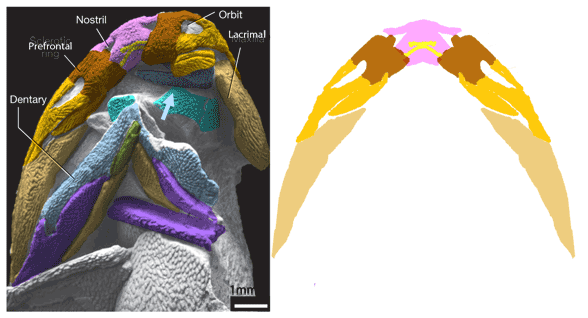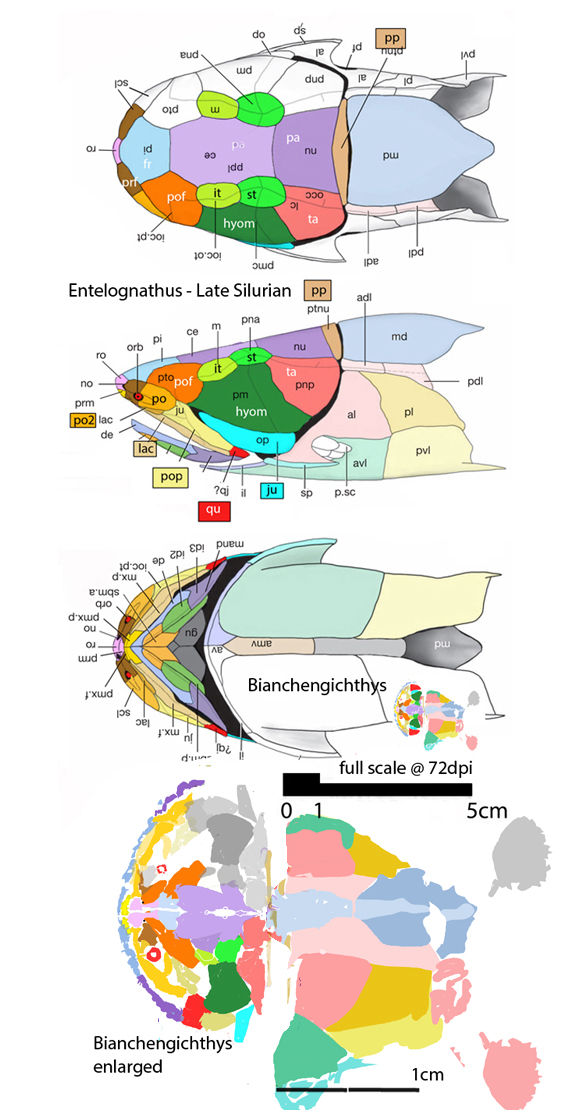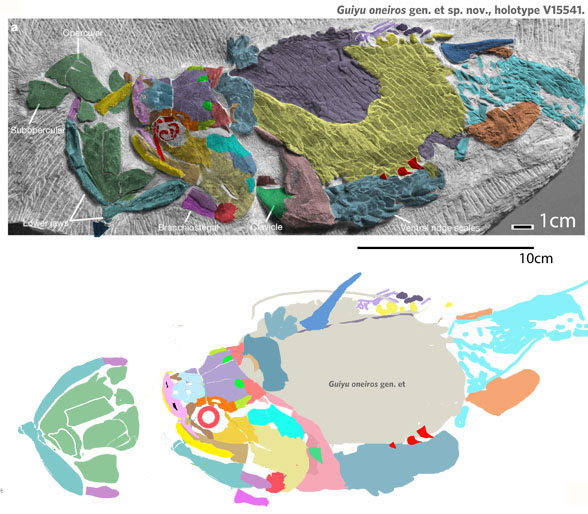Late Silurian Entelognathus is distinctly different from
classic arthrodire placoderms, like Coccosteus and its large-eyed kin. Instead Entelognathus (Fig 1) has tiny eyes, so it was not a sight predator. Nor did it have sharp jaws. More likely it was a shallow water benthic (= sea floor) feeder, like a modern catfish.
Taking another look at the palate view of Entelognathus (Fig 1) revealed overlooked paired elements inside the palate (cyan) that matched the broken jaw tips when cut and pasted using DGS colors and a GIF reconstruction.

Entelognathus could not be unique
in having relatively small eyes and a scooping lower jaw. So I went looking for other similar taxa.

Giant Middle Devonian Titanichthys
(Fig 2) and tiny Late Silurian Bianchengichthys (Fig 3) are two such small-eyed placoderms. Both had flattened, sand scooping transverse mandibles.
I finally realized that hole in the skull of Titanichthys (Fig 2) must be where the otherwise missing intertemporal and supratemporal bones were once located. So they are replaced here.

Readers might remember the pre-gnathostome, Qilinyu,
had a transverse ventral mandible that rotated, if at all, like a rope held taut. It provided no gape. By contrast, the arched mandible of Bianchengichthys (Fig 3) permitted a wide gape due to its curved geometry and placement at the margin of the wide rostrum. That big arc on those little jaws made all the difference between the two taxa.
Where else have we seen that little scoop at the jaw tips
of Entelognathus (Fig 1) and Titanicthys (Fig 2)? Once in the armored catfish, Hoplosternum, and again in the walking catfish, Clarias. Whenever placoderms get mentioned, these two extant catfish keep entering the conversation. We also see it in Late Silurian Guiyu (Fig 4), which evolved heavy interlocking scales in place of the former solid sheets of placoderm thoracic armor.
Entelognathus primordialis
(Zhu et al. 2013; Zhu et al 2016, Late Ludlow, Late Silurian, 419 mya; IVPP V18620) is a genus of placoderm fish with tiny eyes. Here skull bones are re-identified with their tetrapod homologies. Pre-teeth begin here as tiny pustules and wrinkles on the bone.
References
Zhu M, Yu X-B, Ahlberg PE, Choo B and 8 others 2013. A Silurian placoderm with osteichthyan-like marginal jaw bones. Nature. 502:188–193.
Zhu M et al 2016. A Silurian maxillate placoderm illuminates jaw evolution. Science 354.6310 (2016): 334-336.

